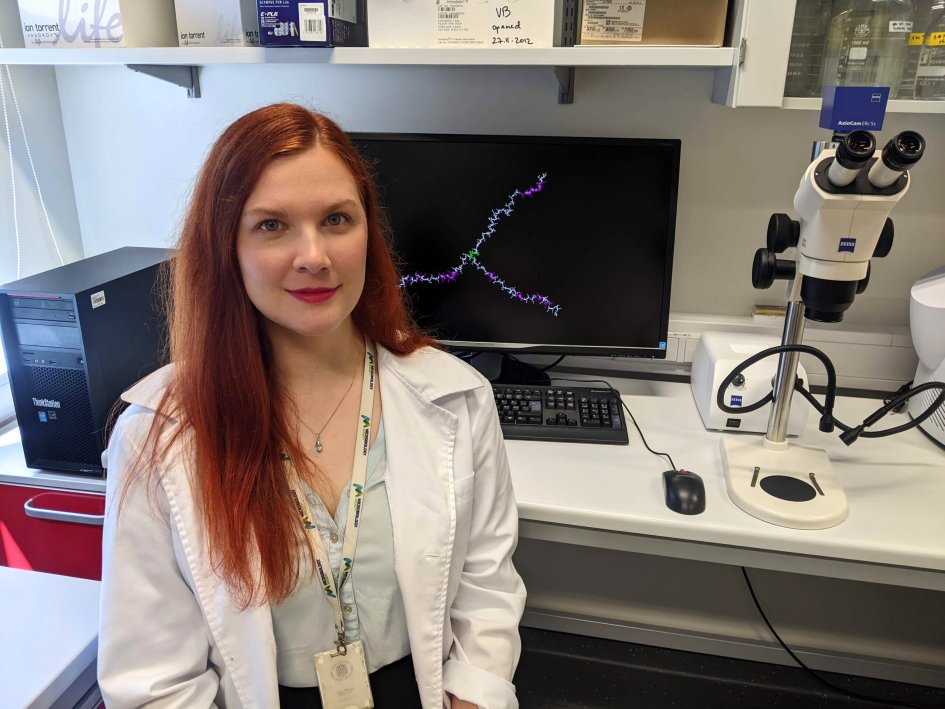New drug suggests more successful breast cancer treatment in future
University of Tartu researchers in cooperation with colleagues from the Principe Felice Research Center of Valencia, Spain have developed a new drug called OximUNO, which has shown to treat breast cancer in mice. The first successful trials showed that OximUNO may in future effectively treat the most aggressive type of breast cancer. The results have been published in Cancer Research Communications, a journal of the American Association for Cancer Research (AACR).
Anni Lepland, doctoral student of biomedicine and translational medicine of the University of Tartu, led by Dr. Pablo Scodeller (associate professor of UT) and Prof. Tambet Teesalu (head of the Laboratory of Precision and Nanomedicine), has together with the spanish colleagues developed a drug for triple-negative breast cancer. “This is the most aggressive type of breast cancer and the most difficult to cure. The treatment options are therefore quite limited. The problem is that in the course of therapy, also other cells of the body are affected, with potentially devastating consequences,” Lepland said.
Anni Lepland explained further that a tumor creates around itself an environment in which various cells live, including macrophages. “Under normal conditions, macrophages help us eliminate pathogens or heal wounds. However, macrophages are plastic or easily changeable by nature, and tumours take advantage of that. Cancer turns macrophages into bad, tumour-promoting cells and makes them work against the human,” Lepland explained.
Researchers have worked out a method that can distinguish between the so-called good and bad macrophages in the tumour environment and destroy the bad macrophages. Specifically, Anni Lepland’s supervisors Dr Pablo Scodeller and Professor Tambet Teesalu developed a peptide or amino acid chain that is able to find the bad macrophages. “The peptide helps the OximUNO drug to find and bind to bad macrophages, and thereby deliver the drug into the cell, eventually destroying the cell,” Lepland said.
The researchers carried out three treatment trials and one survival study in mice, showing that treatment with OximUNO reduces primary tumour lesions and lung metastasis, and prolongs the survival of mice with triple-negative breast cancer. “Two treatment trials studied how the administration of OximUNO affects the size of the tumour in breast tissue. The results showed that the tumour in the breast tissue decreased in size, and OximUNO was also found to be able to reduce self-induced lung metastases. This was the reason for the decision to continue to study OximUNO’s effect specifically on lung metastasis,” Lepland explained. Experiments confirmed that OximUNO was able to reduce the size and the amount of tumor nodules in the lung.
Finally, a survival study was conducted, showing that OximUNO could extend the survival of mice. Therefore, the work allows to conclude that OximUNO reduces the tumour in the breast tissue, prolongs survival rate and can curb lung metastasis. “The latter is a very important aspect as metastases make cancer treatment more difficult. If cancer has spread to various parts of the body, the treatment options are even more limited,” Lepland added.
According to Lepland, the experiments showed OximUNO to be safe and effective, precisely targeting the bad, tumour-associated macrophages. The drug was also shown not to endanger other cells of the body.
There are many companies and different clinical trials that target tumour-associated macrophages in cancer treatment. Work is also underway to combine the treatment of tumour-associated macrophages with other treatment methods.
Anni Lepland said that it can take 10–15 years from a discovery to clinical trials. “Although we showed that OximUNO has an impact on the development of tumour, we did not cure the mice. Before we can move on to human trials, we need more solid results. When the drug makes it into human trials, its inclusion in actual tumour treatment will depend on whether or not it works in humans.”
Anni Lepland’s supervisors are Dr Pablo Scodeller and Professor Tambet Teesalu of the University of Tartu Laboratory of Precision and Nanomedicine. For the project, they mainly cooperated with the laboratory of Dr. María J. Vicent at the Principe Felipe Research Center of Valencia and with Dr. Alessio Malfanti of Université Catholique de Louvain. The work is mainly funded by Pablo Scodeller’s ETAg grant received in 2018.

